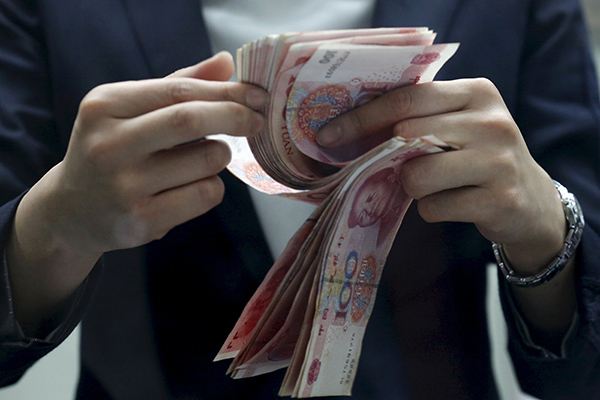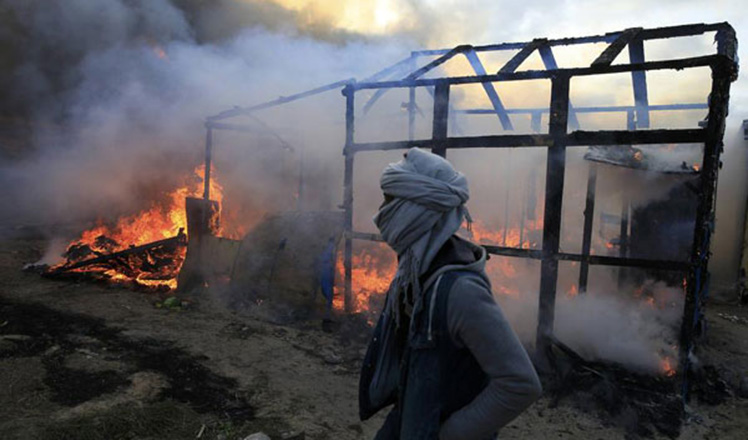Central bank sends clearer monetary accommodation signal
Updated: 2016-03-01 14:28
By Wang Tao(chinadaily.com.cn)
|
||||||||
 |
|
A clerk counts Chinese 100 yuan banknotes at a branch of a foreign bank in Beijing, Jan 4, 2016. [Photo/Agencies] |
The People's Bank of China announced a 50-basis-point reserve requirement ratio cut for bank deposits on Monday night, taking the system average from 17 percent to 16.5 percent, releasing around 700 billion yuan in base money supply on our estimates.
The cut was timed to maintain adequate liquidity conditions in the face of ongoing capital outflows and lower short-term rates somewhat to counter their recent rise with the automatic withdrawal of significant short-term liquidity, post-Chinese New Year.
Meanwhile, it sent a clearer signal of monetary policy accommodation now that exchange rate concerns and pressures have eased compared with earlier this year.
Additional RRR cuts have been expected and needed for a while to offset sizeable yuan-depreciation fanned capital outflows since last October's RRR cut. We estimate non-FDI capital outflows stayed high at around $160 billion in December and January.
However, the central bank has until now been reluctant to deliver, preferring to use shorter liquidity provisioning or interest rate tools such as Standing Lending Facilities and Medium-term Lending Facilities instead, for fear of further aggravating RMB depreciation pressures.
Now that exchange rate concerns and pressures have eased somewhat versus the Chinese New Year, the PBOC appears to be sending a clearer signal of monetary policy accommodation.
Even before G20 finance ministers and central bank governors' calls last week, the Chinese government had been indicating that it would be adopting more expansion in fiscal and monetary policies to support growth.
December's Economic Work Conference laid out a clear easing bias for China's 2016 policy plans. We expect more detailed measures to come, including the new budget to be unveiled at the annual National People's Congress this weekend, on the monetary, fiscal and structural fronts.
As Governor Zhou Xiaochuan reiterated last Friday, there will be more policy easing to come, but the PBOC does not intend to let its currency depreciate sharply and will manage its exchange rate referencing the basket while considering dollar-yuan movements. We still see the PBOC cutting the RRR multiple times by a total 300bp cuts and cutting benchmark rates twice more (taking the 1-year deposit and lending benchmark rates to 1 percent and 3.85 percent, respectively) this year.
While benchmark interest rates were not cut on Monday, persistent deflationary pressures mean that real interest rates remain too high, pushing up corporates' debt servicing burden and risking passive monetary tightening. We maintain our view that the RMB will only be allowed to depreciate by a modest 5 percent against the US this year, leaving it at 1: 6.8 by the end of 2016.
The article is a collaboration with UBS economists Donna Kwok, Ning Zhang and Jennifer Zhong. The views do not necessarily reflect those of China Daily.
- Cuba intensifies fight to fend off Zika virus
- UN chief calls for 'prompt, impartial' probe into airstrike on Yemeni market
- Ex-Tepco execs indicted over Fukushima disaster
- British PM threatened with 'no confidence vote' over EU referendum
- 70,000 may become trapped in Greece
- Venezuela, Qatar, Saudi Arabia, Russia to meet to stabilize oil market

 Clashes break out as France begins clearing Calais migrant camp
Clashes break out as France begins clearing Calais migrant camp
 Top 10 cities with most billionaires in 2016
Top 10 cities with most billionaires in 2016
 Milan Fashion Week: Dolce & Gabbana Autumn/Winter 2016 collection
Milan Fashion Week: Dolce & Gabbana Autumn/Winter 2016 collection
 Stars arrive at 88th Academy Awards in Hollywood
Stars arrive at 88th Academy Awards in Hollywood
 China has world's largest high-speed rail network
China has world's largest high-speed rail network
 Top moments from Oscars 2016
Top moments from Oscars 2016
 China Daily weekly photos: Feb 20-26
China Daily weekly photos: Feb 20-26
 People view plum blossoms at scenic area in E China
People view plum blossoms at scenic area in E China
Most Viewed
Editor's Picks

|

|

|

|

|

|
Today's Top News
What ends Jeb Bush's White House hopes
Investigation for Nicolas's campaign
Will US-ASEAN meeting be good for region?
Accentuate the positive in Sino-US relations
Dangerous games on peninsula will have no winner
National Art Museum showing 400 puppets in new exhibition
Finest Chinese porcelains expected to fetch over $28 million
Monkey portraits by Chinese ink painting masters
US Weekly

|

|







